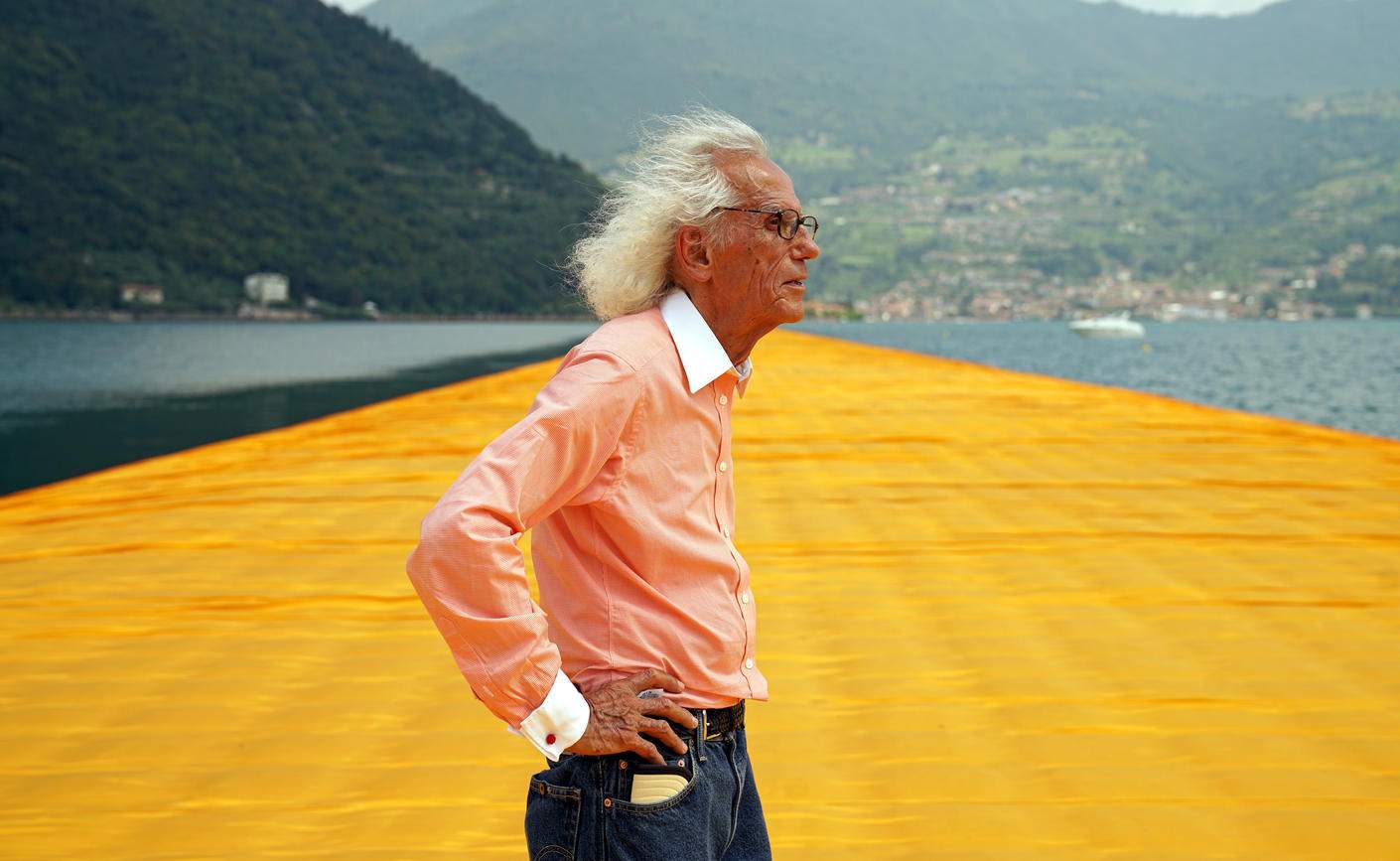The great artist Christo has passed away in New York City at the age of 84, his staff making the announcement through the artist’s official website and social channels. The death occurred of natural causes. Christo Vladimirov Javacheff was born in Gabrovo, Bulgaria, in 1935, was one of the biggest names in nouveau realisme, and together with his wife Jeanne-Claude Denat de Guillebon (who was born in Casablanca, Morocco, on the same day as him: June 13, 1935), whom he met in Paris in 1958, he created one of the most famous art couples of all time.
Christo had begun his career in the 1950s: after a degree in philosophy from the University of Tunis he had returned to his native country, where he studied at the National Academy of Art in Sofia and then moved in 1956 to Prague, then the following year to Vienna, where he spent six months at the local Academy of Fine Arts: in the same year he moved to Geneva before landing in Paris in 1958, where, as mentioned, he met Jeanne-Claude, who as early as 1960 gave him his first son, Cyril. In 1961 came the first Packaged Public Building Project, and the following year the two produced their first work together, Rideau de Fer, a four-meter-high wall of oil barrels erected along the Seine in Paris.
In 1964, with their move to New York, they began to design their own environmental art interventions (the two, in fact, considered themselves environmental artists): theAir Package, a large balloon installed at the Van Abbemuseum in Eindhoven, dates from 1966, and the enormous 42,390 cubic feet package, another colossal air balloon (18 meters long by nearly 10 meters high) displayed in an open space in Minneapolis, Minnesota, dates from the same year. In 1968 Christo and Jeanne-Claude went to Italy for the first time, to Spoleto: here, on the occasion of the Festival dei Due Mondi they packed the Fortilizio dei Mulini and the fountain in Piazza del Mercato, for the project Wrapped fountain and wrapped medieval tower. Also in the same year they wrapped the Kunsthalle in Bern and took one of their air balloons to Documenta IV in Kassel.
So 1968 was the year of consecration, and from there on the packings followed: famous ones in Milan in 1970 (involving the monument to Vittorio Emanuele II in Piazza del Duomo and the monument to Leonardo da Vinci in Piazza della Scala), that of the Pont Neuf in Paris in 1985, and perhaps the most famous one ever, the wrapping of the Reichstag in Berlin in 1985. In parallel, Christo and Jeanne-Claude pursued their environmental art projects: the Surrounded Islands (1980-1983), when the couple surrounded islands in Biscayne Bay across from Miami with pink polypropylene fabric, and the Umbrellas, installed in Japan and California, have entered art history textbooks.
In 2016 Christo had returned to Italy to create one of his best-known, best-loved and most talked-about projects, The Floating Piers: one hundred thousand square meters of yellow fabric arranged on floating blocks on Lake Iseo to connect the town of Sulzano to Monte Isola(more here). And then again in 2018 it had been the turn of The Mastaba, a floating pyramid on the Serpentine Lake in Hyde Park, London.
At the time of his passing, Christo was working on his last project, the wrapping of the Arc de Triomphe in Paris, scheduled for this year but postponed to 2021 because of the health emergency for coronavirus Covid-19: it was a dream the Bulgarian artist had been nurturing since the 1960s.
 |
| Farewell to Christo, the great artist who made us walk on water, famous for his wrap-arounds |
Warning: the translation into English of the original Italian article was created using automatic tools. We undertake to review all articles, but we do not guarantee the total absence of inaccuracies in the translation due to the program. You can find the original by clicking on the ITA button. If you find any mistake,please contact us.